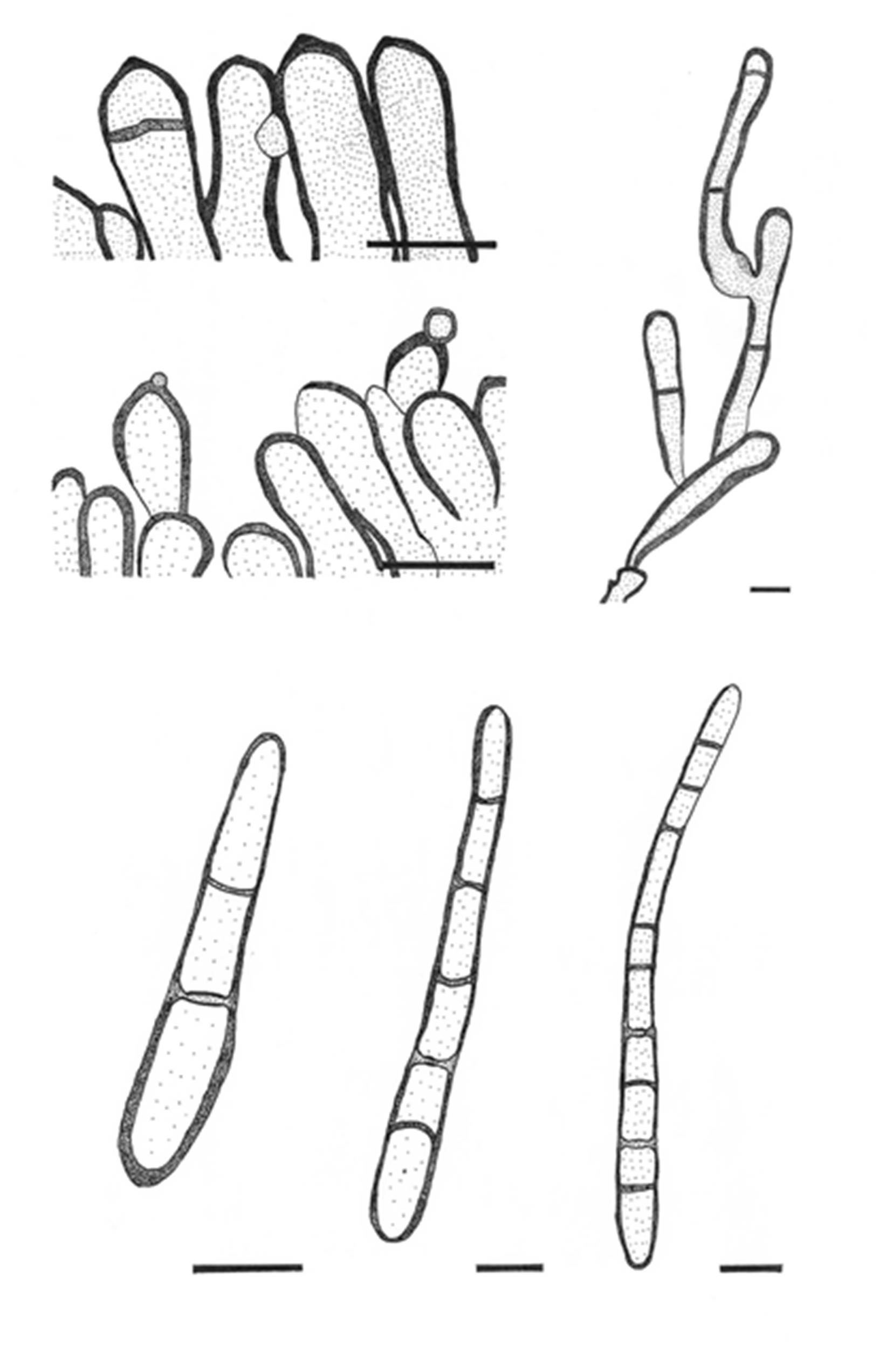Porocercospora seminalis (Ellis & Everh.) Amaradasa et al., Mycologia 106(1): 81 (2013).
≡ Cercospora seminalis Ellis & Everh., J. Mycol. 4(1): 4 (1888)
≡ Sporidesmium seminale (Ellis & Everh.) U. Braun, Cryptogamie Mycologie 20 (3): 175 (1999).
Parasitic on grasses. Sexual morph: unknown. Asexual morph: Conidiophores 450–500 × 5–8 µm, intermingled among hyphae, subcylindrical, medium brown, smooth to finely verruculose, branched above, thin-walled, septate. Conidiogenous cells 20–30 × 5–7 µm, subcylindrical, medium brown, smooth to finely verruculose, apex rounded, monotretic, with a central pore, indistinct, not darkened or thickened. Conidia 60–90 × 7–8 µm solitary, medium brown, thick-walled, finely verruculose, obclavate to cylindro-obclavate, with short conidia obovoid to subcylindrical, transversely multi-distoseptate; apex subobtuse, base obconically truncate, with hila having a distinct central brown pore, thickened and darkened (Amaradasa et al. 2014).
Notes: Porocercospora was introduced by Amaradasa et al. (2014) to accommodate Cercospora seminalis which causes false smut in buffalograss (Buchloe¨ dactyloides). The genus is characterised by densely aggregated and repeatedly branched conidiophores arising from a brown stroma, monotretic conidiogenous cells with inconspicuous loci, and scolecosporous conidia with distosepta, and thickened, darkened hila. DNA sequence data in the present study as well as in the previous studies (Amaradasa et al. 2014) indicated that Porocercospora seminalis is phylogenetically close to but distinct from the genera Bipolaris and Curvularia. In our phylogeny the type strain of Porocercospora seminalis (CPC 21332) forms a distinct clade sister to Johnalcornia. Therefore we accept the placement of Porocercospora as separate genus in Pleosporaceae.
Fig 1 Porocercospora seminalis (Redrawn from Amaradasa et al. (2014), Fig 2.). Scale bars: 5 μm

